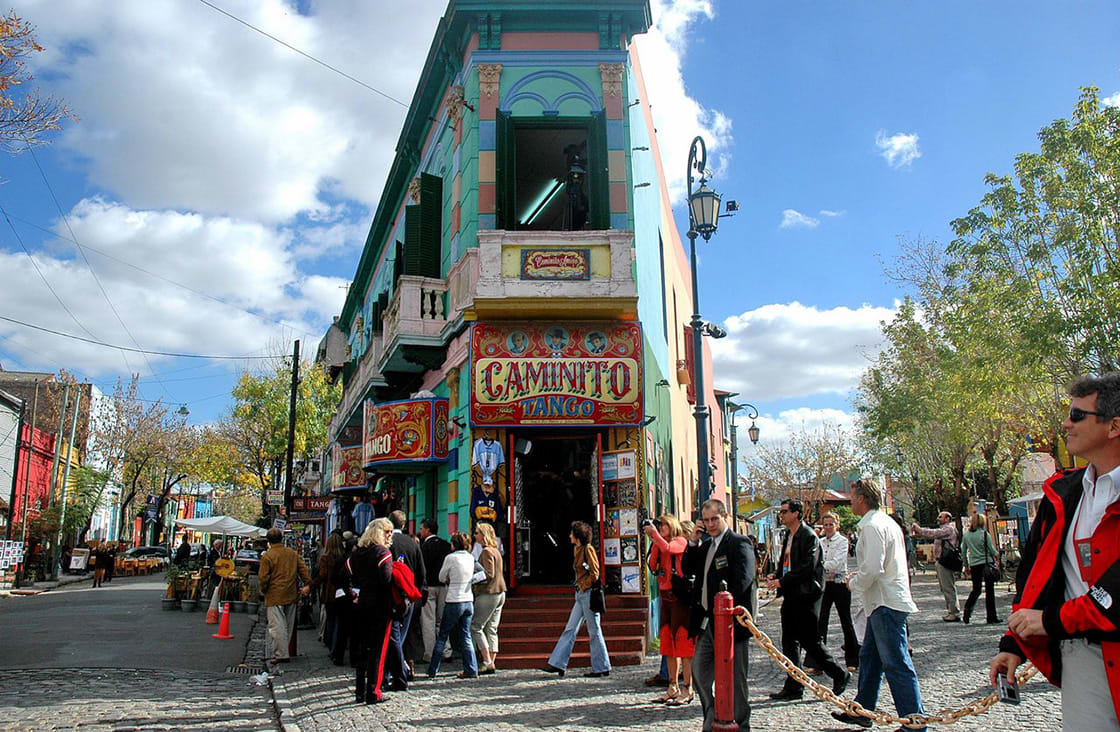
Argentina is a land of towering waterfalls, immense ice fields, authentic estancias, and a most-enchanting capital city. Wildlife and natural attractions are never too far away. From the steamy jungles of Iguazu Falls National Park in the subtropical north to Mendoza to Buenos Aires, you’ll have opportunities for nature-based forest hikes, city exploration, cultural immersion, and wine tasting. Visiting the Golfo Nuevo brings the amazing opportunity to glimpse Southern Right Whales, and taking a trip to Ushuaia − the city at the end of the world, and Los Glaciares National Park in the Patagonia region offers the chance to see penguins and colossal glaciers. This list of the best places to visit in Argentina will help you to plan your trip to this delightfully diverse travel destination.
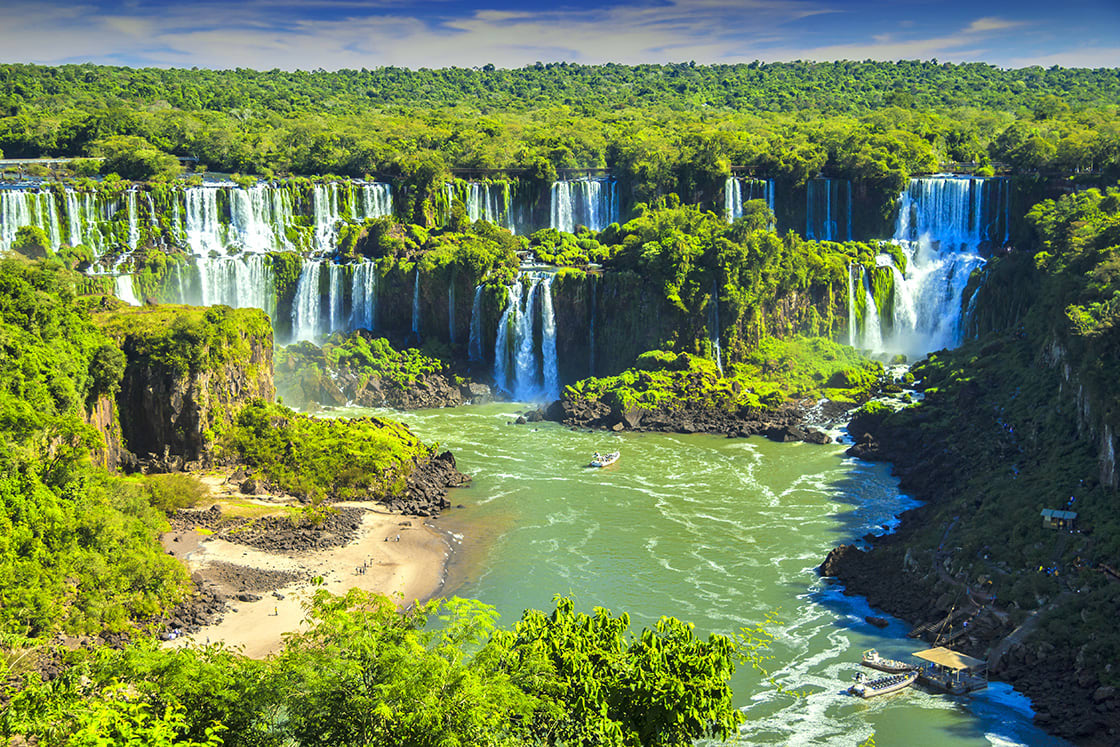
Impressive Panorama Of Misiones, Iguazú Falls
One of the planet’s most awe-inspiring natural wonders and a UNESCO World Heritage Site, the Iguazú Falls is a chain of 275 separate waterfalls spanning the almost-two-mile-long fall line of the Iguazú River, which straddles the border between Argentina and Brazil. A visit to the falls is a knee-buckling, visceral experience, while the power of the cascades plunging 260 feet in a thunderous roar of mist and rainbows among giant ferns, vines, and orchids, is a sight that will live forever in your memory.
In the tropical rainforests and waterfalls of the Argentinian side of Iguazú National Park, you are likely to find butterflies, monkeys, caiman, peccary, and deer, as well as abundant birdlife, especially parrots, toucans, and hummingbirds. After exploring the vast trail system on foot, you can board a small train and journey a few miles to the ominously named Devil’s Throat Station, which surrounds the upper part of the Iguazú River. Shaped like a horseshoe, and including 14 waterfalls, this is the largest, most impressive, and dramatic water curtain in the whole system.
It’s one thing to stand back and take in this mighty riverscape; it’s another altogether to fully immerse yourself in it, so take the opportunity to board a special Zodiac boat for a wild and wet adrenaline rush. Crossing one mile of rapids, the boat gets into the Devil’s Throat Canyon near the falls, but at a safe distance.
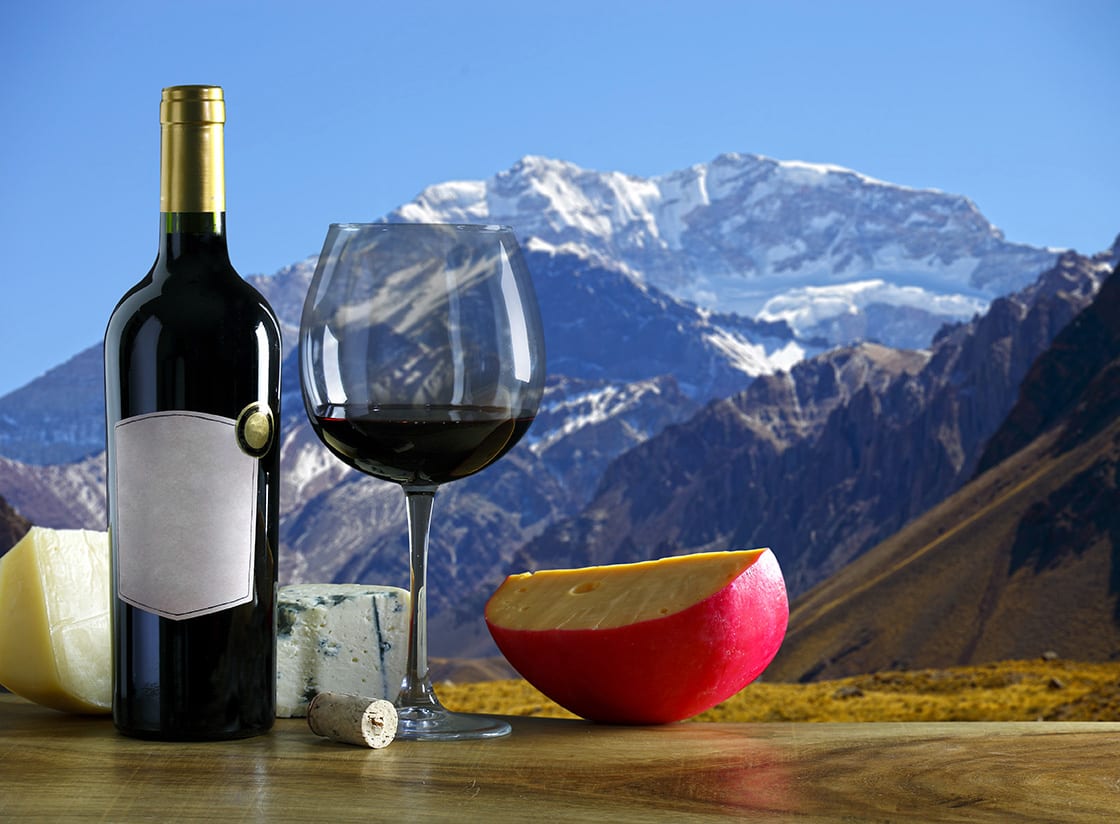
Argentine Wine And Cheese
Best known for its vineyards, Mendoza is a lively city of wide, leafy avenues, atmospheric plazas, and cosmopolitan cafes, situated to the east of Mount Aconcagua, the highest peak in the Western Hemisphere. It’s actually a desert town, but it has an interesting irrigation system that keeps the region well-watered – acequias (irrigation ditches) run beside the roads and glorious fountains adorn the plazas. Mendoza is synonymous with wine, and this is the place to base yourself if you’re up for touring the Argentinian vineyards.
Many of the bodegas (wineries) run regular vineyard tours and wine tasting sessions. Mendoza also offers access to beautiful scenery and outdoor adventures such as horse riding, river rafting, climbing, skiing, and hiking in the nearby Andes. At the heart of Mendoza is its main square, Independence Plaza, which is surrounded by restaurants, shops, and beautiful buildings that are illuminated at night.
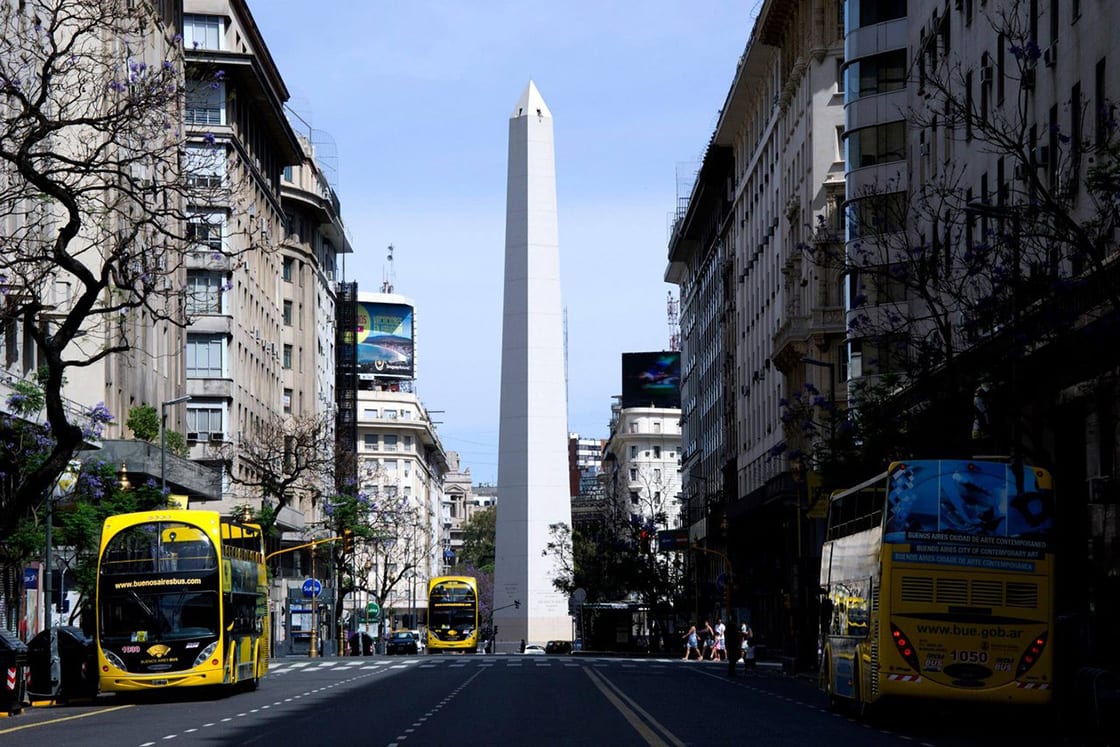
Obelisco In Buenos Aires Downtown
Argentina’s capital, Buenos Aires is one of the essential places to visit in Argentina. The city combines faded European grandeur with Latin passion. On the narrow cobblestone streets of the old town, tango music is heard at every corner. Be sure to head down 9 de Julio Avenue, the widest avenue in the world, its name honoring Argentina’s Independence Day. You’ll pass the majestic opera house known as ‘Teatro Colón’, the magnificent ‘Obelisco’, and ‘Casa Rosada’, the pink-colored government mansion with the iconic balcony from which Eva Perón famously addressed the throngs of impassioned supporters packed into Plaza de Mayo.
See the Metropolitan Cathedral with the mausoleum of General San Martín, Argentina’s independence hero, and the ‘Cabildo’ (Town Hall). Visit local barrios such as La Boca, a traditional quarter of brightly painted Italian family homes and restaurants, the graceful neighborhood of Palermo where you can stroll through purple-blossomed parks, rose gardens and lakes among porteños playing sports, and the Recoleta district, one of the most fashionable parts of the city, which includes South America’s most opulent and extraordinary cemetery, the resting place of Eva Peron.

View Of The Nahuel Huapi Lake From Campanario Hill
San Carlos de Bariloche, also known simply as Bariloche, can be found nestled on the slopes of Cerro Otto in Argentina’s enchanting lake district. Overlooking the magnificent royal blue lake and avocado mountain slopes of the Parque Nacional Nahuel Huapi, the country’s first and largest national park, the views from Bariloche are simply sensational.
Bariloche is one of the country’s most popular sporting destinations – visitors come for skiing, trekking, rock climbing, and water sports. Here, you can go hiking, horseback riding, kayaking, and fly fishing. You can explore the surrounding forest and mountain trails on foot, trekking deep into canyons, to waterfalls, and to the crests of nearby peaks for stunning views over lakes and mountains.

Magellanic Penguins On The Beach near Puerto Madryn, Argentina
Located on the shores of Golfo Nuevo, the city of Puerto Madryn is best known as the gateway to Peninsula Valdes. The beaches are beautiful but the water can be very cold. Whale Watching tours are popular as the Southern Right Whale uses the waters of Golfo Nuevo for breeding and giving birth. From July to September the whales are so close they can be viewed from the mainland.
Jutting out into the South Atlantic, the mushroom-shaped Peninsula Valdes is a breeding ground for a variety of fascinating marine mammals, such as seals, penguins, orcas, and sea lions. The headland is a superb spot for bird watchers as there are over 180 species of birds recorded here.
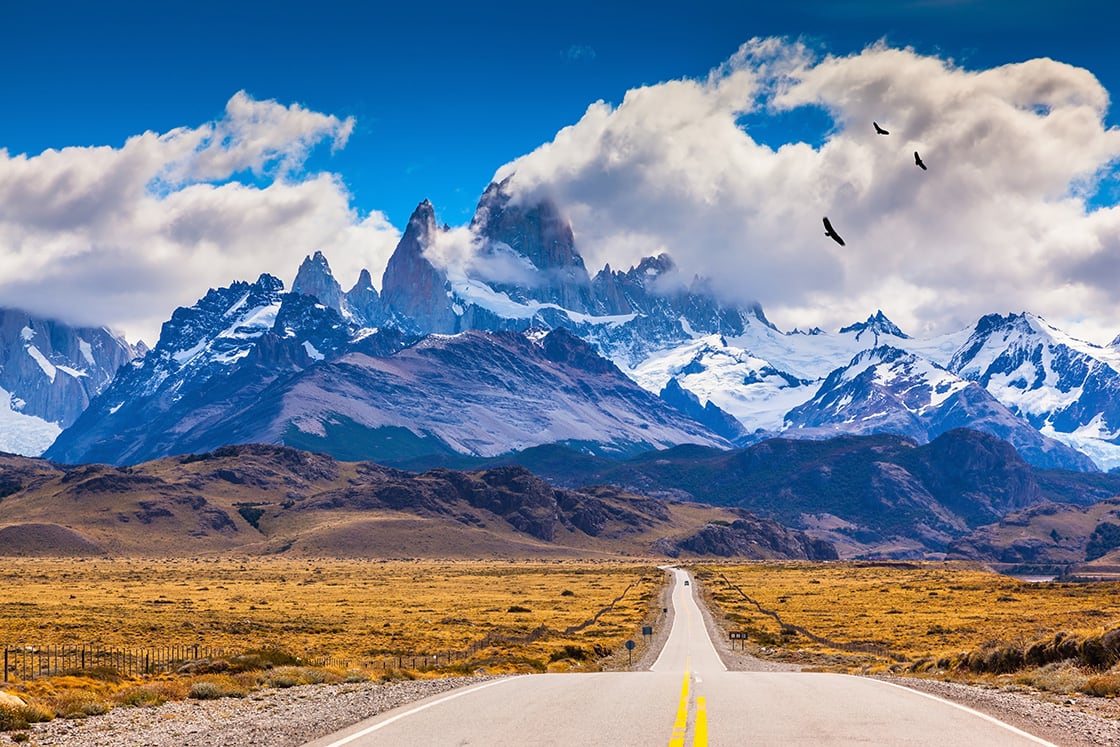
The Patagonia Highway On The Way To The Fitzroy Mountain
Los Glaciares is Argentina’s second-largest national park, and one of the biggest and easiest to reach ice fields on the planet. The Patagonian Continental Ice Cap runs 560 miles from North to South and is the origin of 47 major glaciers.
The repeated advancing and retreating cycle of the glaciers presents a never-ending show of cracking ice and thunderous booms. Despite the captivating scenery of turquoise lakes and forest-clad slopes, the park is most famous for the Perito Moreno Glacier, which draws trekking and rock-climbing enthusiasts from far and wide. This ‘White Giant’ towers above the turquoise glacial waters of Lago Argentino, its front wall beaming a blinding white light filled with cold blue hues. Permanently advancing along its 3-mile front, columns of ice over 20 stories high peel off the face and plunge dramatically into the lake creating massive icebergs – an occurrence known as ‘calving’.
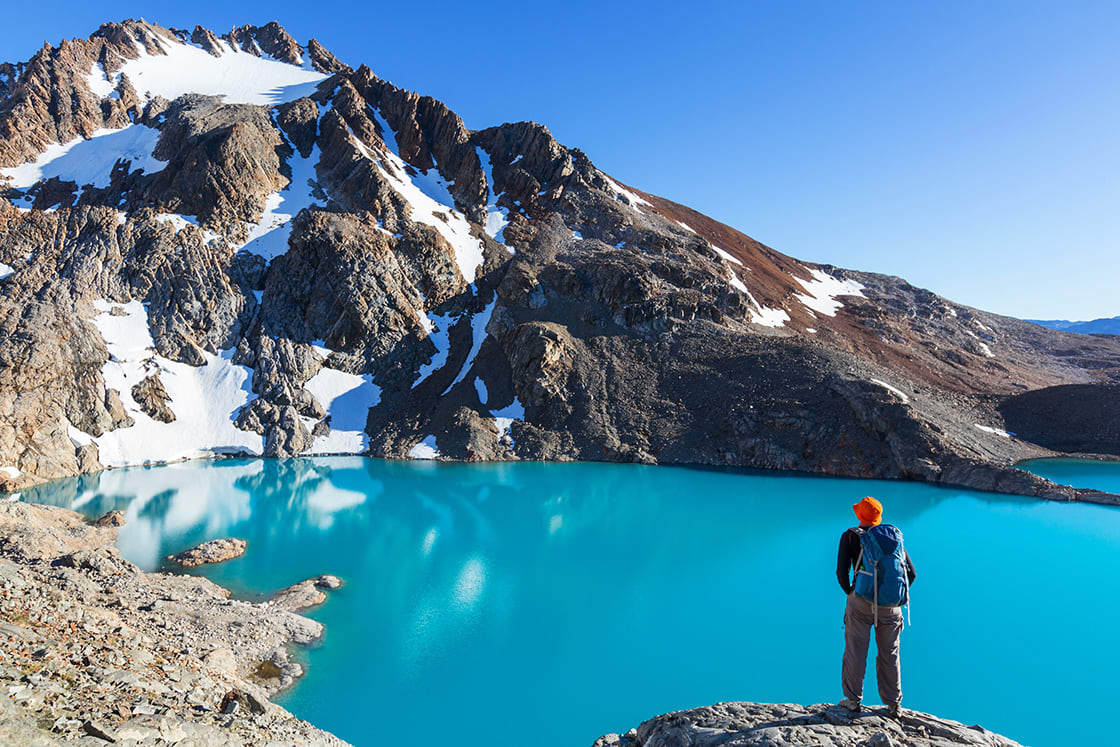
Hiking In The Patagonia
Overlooking the northern part of Los Glaciares National Park, El Chaltén is Argentina’s national capital of trekking. This delightful frontier town was initially formed as an outpost in the late ’70s in the Patagonian region. Within this breathtaking natural scenery, you will have multiple and varied options for walking, climbing, going on excursions and expeditions.
Popular hikes include the relatively easy trek to the isolated Lago del Desierto, the sunrise spot at Laguna Capri, and the longer, more challenging hike to Laguna de Los Tres or Laguna Torre. After a day on the trails, the village’s La Cerveceria local brewery is the go-to hotspot in town for a post-hike thirst-quencher.
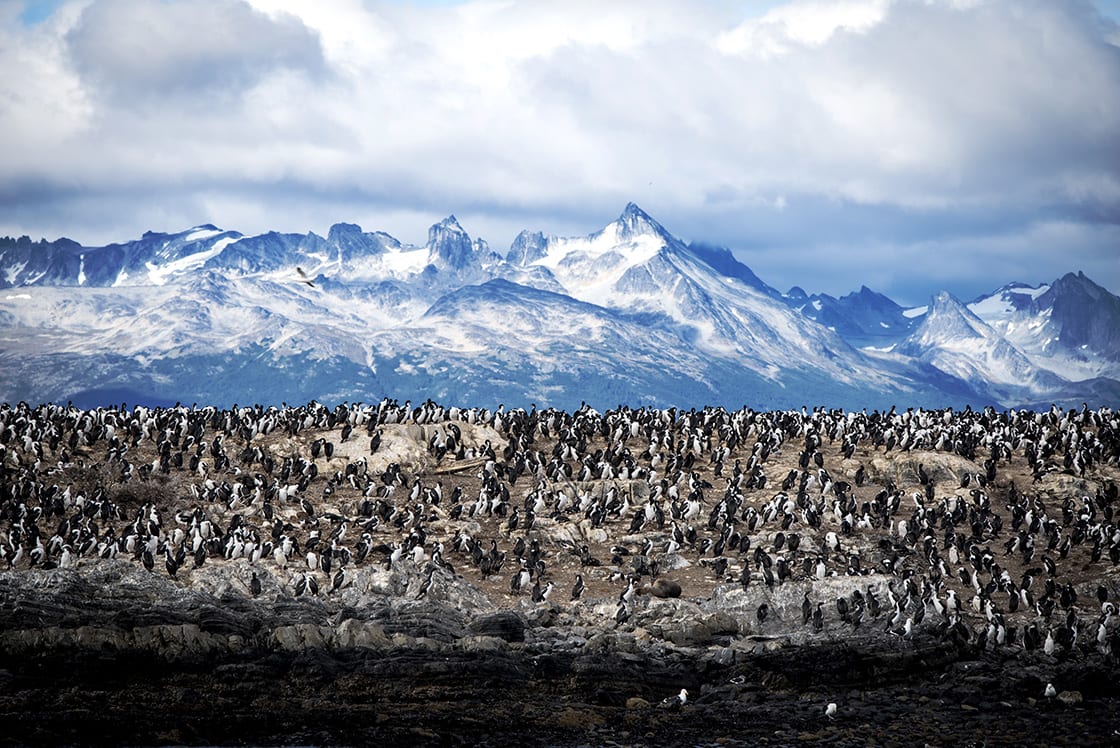
Ushuaia, Beagle Channel, Patagonia – Argentina
Tucked within the Beagle Strait, Ushuaia is one of the most southerly cities on Earth, which is why it is known as the ‘End of the World’. It once served as an exile prison and an Argentinian naval base.
Today, the city’s main tourist attractions are split from east to west: the End of the World Train and Tierra del Fuego National Park can be found to the west while Fagnano Lake and plenty of scenic hiking trails can be found to the east. A visit to the Beagle Channel offers views of sea lions and penguins.
While Rainforest Cruises aim to provide accurate and up-to-date information, we make no representations as to the accuracy or completeness of any information herein or found by following any link on this site. Rainforest Cruises cannot and will not accept responsibility for any omissions or inaccuracies, or for any consequences arising therefrom, including any losses, injuries, or damages resulting from the display or use of this information.




